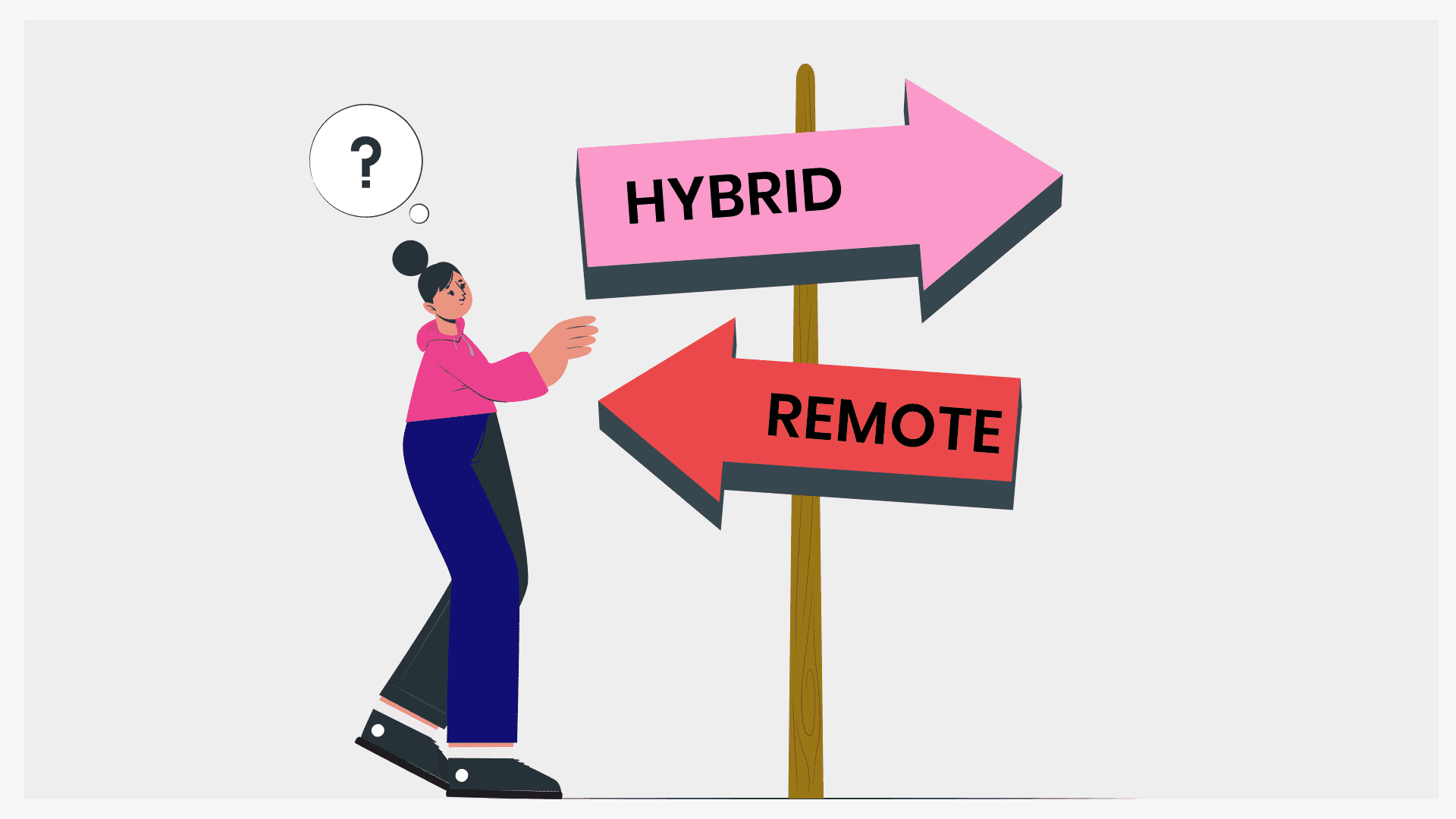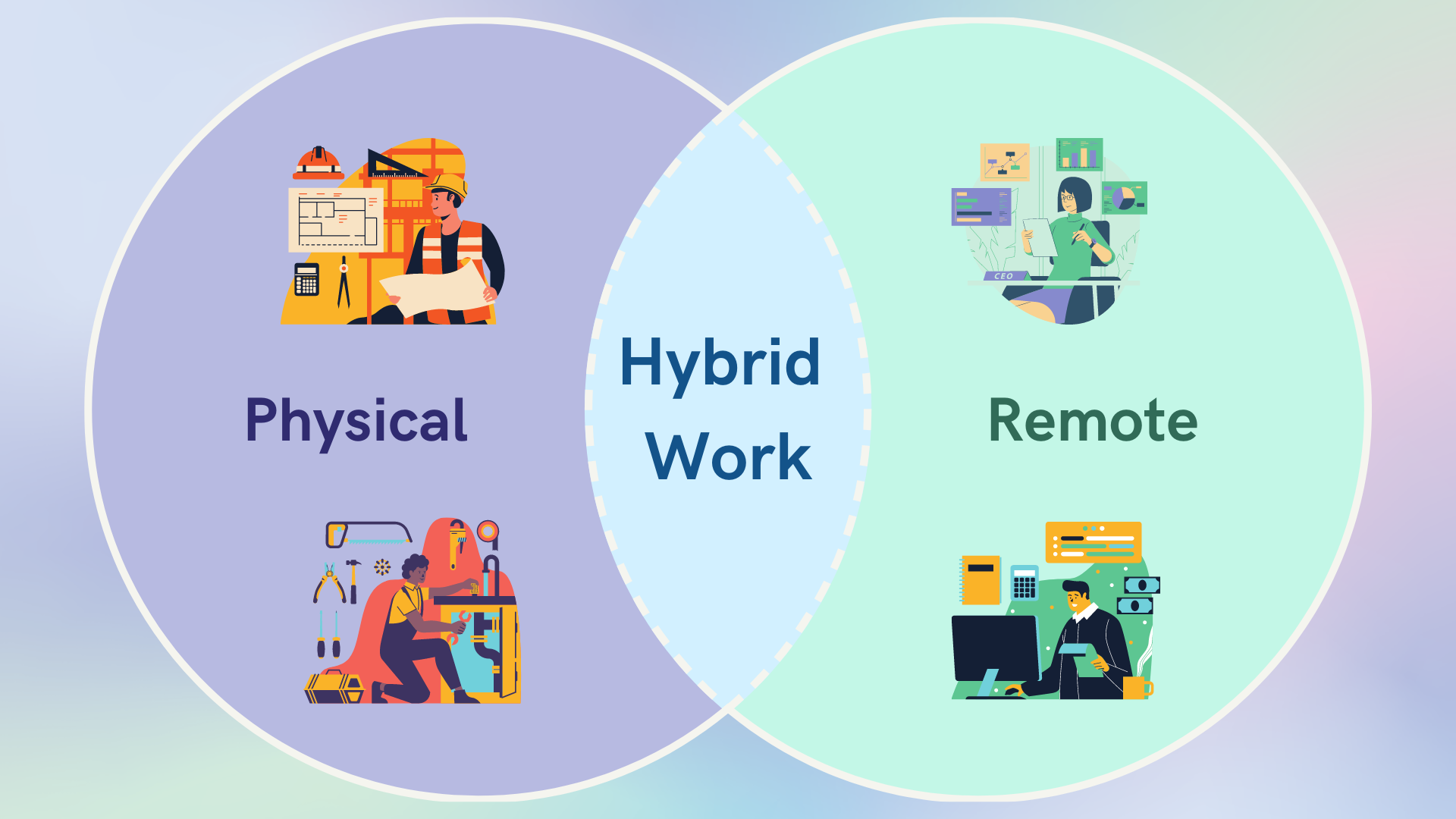Did you know that over 70% of employees globally now prefer some form of remote work? In 2025, this fact has become hard to ignore. Companies across the world are trying to figure out what actually works best, not just for their profits, but also for their people. So, what does the future of work really look like? Is it going to be all remote, fully back to office, or a mix of both?
Let’s talk about how the Hybrid vs Remote work culture is changing the way we perceive corporate jobs. We’ll see how businesses are choosing between remote and hybrid models, how AI is helping in this decision, and what kind of skills you’ll need to succeed in this new work world.
How the Hybrid vs Remote Work Environment Has Changed Since the Pandemic
Change is the only constant, and the pandemic proved that true, especially for our Hybrid vs Remot work culture.
Before 2020, many of us thought working from home (WFH) was just a luxury for a few. Most people were used to the daily commute, chatting with team members near the coffee machine, and attending endless meetings in the office environment. But then, everything flipped overnight. The shift to remote work began not as a choice, but as a necessity. And suddenly, people discovered something surprising—productivity didn’t fall. In fact, many remote employees started doing more in less time. They had better work-life balance, skipped the traffic, and found it easier to focus. The idea of the traditional in-office setup slowly started to look outdated.

Fast forward to 2025, and companies are now thinking deeply about what kind of work arrangement actually works best. Some have gone fully remote, giving employees the freedom to choose their work location. Others have adopted a hybrid work model, where people spend only a few days in the office and the rest work remotely. And this ongoing debate, hybrid vs remote work, is everywhere. What’s better? What keeps remote workers and hybrid workers more engaged? Is it better to have a fully in-person setup or give flexibility through remote and hybrid options? As businesses test different models, we keep hearing terms like hybrid model, work model, and hybrid vs remote work more often. Whether it’s remote or hybrid, one thing is clear—the way we work, connect, and perform has changed forever. Even hybrid work arrangements have become common, mixing the best of both worlds—in-office work and work from home. And so, in the big battle of hybrid vs remote work, it’s not just about the location—it’s about creating a better work environment for everyone, no matter where they log in from.
How are companies deciding between remote, hybrid, and in-office work models?
Each company is different, and so are their needs. Some want everyone back in the office. Others are happy letting employees work from home. And many are going for a mix—hybrid.
But how do they decide?
👉 They’re looking at what makes their employees more productive.
👉 They’re also checking what keeps people happy and motivated.
👉 And yes, business goals matter too—some jobs just can’t be done remotely.
Here is what Jean Christophe Gabler, Publisher & Founder of YOGI TIMES, says about this:
“Companies are figuring out their work models by paying attention to what actually keeps people engaged and productive. Some thrive in a remote setup because they value deep work and flexibility. Others need in-person energy to keep ideas flowing. The smartest businesses are treating this as a process, testing what works, and adjusting based on what helps their teams stay motivated.”
“Remote work only succeeds when there’s structure. The companies getting this right are setting clear expectations, reducing unnecessary meetings, and giving employees real autonomy. Some are using deep work sessions where notifications are paused so people can concentrate without distractions. Hybrid teams are making office time meaningful by using it for brainstorming and problem-solving instead of just showing up to sit in a different chair. Companies still committed to in-office work are rethinking their spaces to make them feel energizing instead of draining. The ones seeing the best results are listening to their teams and keeping things flexible.”
And here is what Nikita Sherbina, Co-Founder and CEO at AIScreen, says:
“✅ Industry-Specific Needs Matter: While tech, SaaS, and creative industries thrive in remote settings, sectors like manufacturing, healthcare, and retail continue to rely on in-office operations.
✅ Employee Expectations vs. Business Goals: Companies that prioritize talent retention are increasingly shifting to hybrid models, balancing flexibility with the need for collaboration.
✅ AI-Powered Productivity Tracking: Businesses are leveraging AI tools to analyze workflows, detect bottlenecks, and optimize team collaboration in remote and hybrid setups.”
So, clearly, there is no “one size fits all.” Companies are making choices i.e- Hybrid vs Remote work, based on what works best for their team and their work.
Can AI tools help businesses track productivity in hybrid and remote work setups?
Yes, absolutely! But the way they use AI makes a big difference.
Some companies just use AI to watch what employees are doing all day. That can feel like spying and doesn’t really help. But smart businesses are using AI to make work easier, remove extra steps, and track patterns to support employees better.
Here’s what Jean Christophe Gabler says about AI’s role:
“AI is playing a role in helping businesses figure this out, but the way it is used makes all the difference. The best companies are using AI to remove friction, automate repetitive tasks, and track energy patterns so they can support employees better. When AI is used to micromanage productivity, it kills morale fast. The businesses getting it right are using it to help teams work smarter, not just to monitor them.”
This shows that AI should be a helping hand, not a strict boss.
Nikita Sherbina adds this important insight:
✅ AI-Powered Productivity Tracking: Businesses are leveraging AI tools to analyze workflows, detect bottlenecks, and optimize team collaboration in remote and hybrid setups.
So yes, AI can really help—but only when used the right way.
What skills will professionals need to thrive in the future of work?
Now, let’s talk about you. If you want to succeed in this new world of work—whether it’s remote, hybrid, or office—you’ll need a few key skills.
Let’s break it down simply.
Jean Christophe Gabler shares this thoughtful view:
“People who are thriving in this shift know how to manage their own time, communicate well online, and stay engaged without someone looking over their shoulder. Writing clear messages is now one of the most important skills because so much work happens over chat and email. Emotional intelligence matters just as much, since reading between the lines in digital communication takes more awareness. The ones who can stay focused, take initiative, and adapt to different work styles are setting themselves apart.”
This means that being clear in communication and knowing how to manage your time are big wins.
Nikita Sherbina also lists some very practical skills:
🚀 Digital Fluency & AI Adaptability: Employees must be comfortable using AI-driven productivity tools, automation software, and virtual collaboration platforms.
🚀 Self-Management & Asynchronous Communication: The ability to work independently and communicate effectively across global time zones is now a critical skill.
🚀 Emotional Intelligence & Leadership in Virtual Teams: Managers need to foster a strong remote team culture, engagement, and motivation in non-traditional workspaces.
So, whether you’re a fresher or a manager, these are the skills you should build on in 2025.
How Employee Productivity Is Affected by Remote or Hybrid Work Models
Studies have shown that productivity is not about where you work, but how you work. Some people get more done in a quiet corner at home, while others feel more energetic and focused when surrounded by their team in the office. That’s why the debate around Hybrid vs Remote work is getting more attention. Businesses are learning that no single work model fits all. It all depends on the nature of the job and the preferences of the workers.

In a remote work model, many employees enjoy fewer distractions, no daily travel, and the freedom to create their own routine. But at the same time, lack of in-person interaction can make some feel isolated or disconnected. On the other hand, the hybrid remote setup tries to offer both comfort and connection. But switching between remote and in-office days can become tiring if not planned well. This is the real difference between hybrid and remote setups. Companies are now thinking carefully about how remote or hybrid work is affecting focus, creativity, and team bonding.
Here are some things to consider:
- Remote work’s biggest advantage is flexibility, but one of the common cons of remote work is less social interaction.
- A hybrid workplace allows people to enjoy teamwork without giving up home comfort completely.
- Remote employees may find it hard to stay updated if communication is weak.
- Hybrid employees need a clear plan so that office time is productive, not just routine.
- Businesses with a remote workforce need tools and trust, not just rules and meetings.
So whether it’s fully in-office, hybrid or remote work, or something in between, the goal is the same—better work and better life. Many companies are rethinking work policies, exploring hybrid and remote work models, and giving more work options to suit different needs. With more people choosing to work from anywhere, companies are slowly learning how to balance structure, support, and freedom in this new age of working.
Choosing the Right Work Style for Your Business
Whether it’s Hybrid vs Remote work, each business needs to think about what really helps their people get their work done. Some companies are happy with a mix of remote and hybrid work. Others are going entirely remote, saving on costs like maintaining an office space and reducing the daily commute. But again, it’s not just about saving money—it’s also about improving work lives and increased productivity.
Think about your own team. Do they need constant in-person meetings, or can they work easily through video conferencing? Are they comfortable with flexible working hours or do they prefer routine? These small details can make a big difference between remote success and confusion. Many remote workers say they feel more focused when allowed to work outside the office. But some still enjoy going into the office and feeling part of a team. That’s where hybrid work options come in handy.
Here are a few things to consider before choosing your style:
-
Hybrid vs Remote work isn’t about picking sides—it’s about what works best for your team.
-
Make sure to understand the pros and cons of Hybrid vs Remote work culture before you decide.
-
If your business needs collaboration often, a hybrid team might be the better choice.
-
Job opportunities have increased as more companies find remote talent.
-
Many leaders now believe work is better when people have the ability to work their own way.
The idea is not to follow trends, but to make the hybrid model work for your company if needed, or go remote if that suits you better. Research shows that remote and hybrid setups can both lead to happy teams and strong results. The new work culture is here, and every business must choose a style that balances goals, team comfort, and flexibility.

